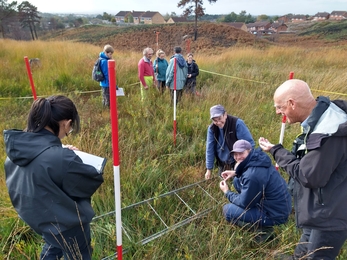People are often surprised when you mention the words ‘restoring peat’ to them. There is almost a dis-association that it can exist in lowland habitat conditions around Dorset. But there are in fact many examples of fen, mire and bog communities exhibited across the Dorset heaths which the discovery grant, funded by the Nature for Peatland Grant Scheme, is enabling the Dorset Peat Partnership (DPP) to investigate.
With a number of milestone targets to achieve by March 2023, engagement is a key ingredient for raising the profile of peat in Dorset. Over the past four months the Dorset Peat Partnership has held several public events, as well as training and monitoring events with volunteers, workshop events with land managers, and even conversations on the factory floor of a fabrication unit in Poole.
The Planet Purbeck Festival launch event, which was held on Wareham Quay in September, was the first undertaking of a full public facing engagement for this project. Equipped with two hydrological catchment model tables, loaned by Forestry England, the interactive water tables could demonstrate how water can be soaked up in the upstream spongey bogs, reducing flooding downstream. The DPP was fortunate to have Dr Sarah Elliott, a Paleoecologist from Bournemouth University, partner up at the event to discuss her latest research findings of peat depths at sites in Dorset, and this formulated the Peaty Pockets of Purbeck Walk which was hosted between Dorset Wildlife Trust, Urbans Heath Partnership and Bournemouth University.


